Learning from this Keras document example
model = Sequential()
model.add(Conv2D(32, (3, 3), padding='same', # why filter is 32?
input_shape=x_train.shape[1:]))
model.add(Activation('relu'))
model.add(Conv2D(32, (3, 3))) # why filter is not changed?
model.add(Activation('relu'))
model.add(MaxPooling2D(pool_size=(2, 2)))
model.add(Dropout(0.25))
model.add(Conv2D(64, (3, 3), padding='same')) # why filter is changed to 64?
model.add(Activation('relu'))
model.add(Conv2D(64, (3, 3)))
model.add(Activation('relu'))
model.add(MaxPooling2D(pool_size=(2, 2)))
model.add(Dropout(0.25))
model.add(Flatten())
model.add(Dense(512)) # why Dense neurons is 512? not 1024? what's the rule to set the number?
Here are my qeustions:
why in the 1st layer filter is 32 and not changed in the 2nd place but still in 1st layer?
Why in the 2nd layer filter is changed to 64? What is the rule to set the number?
why Dense neurons are 512? not 1024? what's the rule to set the number?
